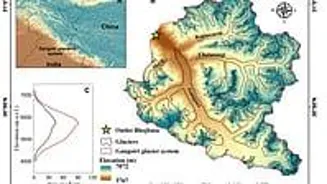Secrets of the Lake
Ever wondered what the lakebed holds? Scientists utilized isotope analysis to unravel the history of the Great Salt Lake. Oxygen isotopes revealed water
balance intricacies. This allowed researchers to reconstruct thousands of years of environmental changes within the lake. This analysis helps illuminate the past.
Carbon’s Time Travel
Tracking carbon through time has been crucial. The analysis highlighted how organic materials within the lake sediments provide a timeline. This timeline illustrates changes that occurred over centuries. By examining these sediments, researchers gained a clearer view of the ecosystem's evolution and the factors influencing it.
Humans' Footprint Emerges
The research brought forth an alarming reality: human impact on the Great Salt Lake's environment. These insights revealed the influence of human activities. The arrival of humans significantly altered the landscape and affected the lake's natural cycles. This calls for awareness of the need to reverse the decline.
Reversing the Tide
The study provides pathways to revive ecosystems. Scientists' findings suggest that, by understanding the past, we can learn to make informed decisions. This helps in reversing the ecological damage and restoring balance. These insights provide a blueprint for preserving such environments.
Ecosystem's Whispers
The sediments hold the key to understanding ecosystems. By examining these layers, scientists understand how environmental factors have shaped the region. They have gained a glimpse into how humans and nature have interacted over time. The research inspires a call for protecting the lake.













